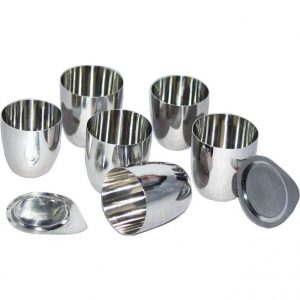
당사 (주)연진에스텍에서 공급하는 "evaporation crucible"은 Cu 또는 W, Mo, Ta와 같이 용융점이 매유 높은 내화 금속과 세라믹 코팅의 유무나 quartz, Al2O3, ZrO2, BN, BN-TiB2, 흑연과 같은 내화성 세라믹 재료로 만들어집니다. 특히 다양한 재료를 수용하는 국산 알루미나 크루시블과 사파이어 크루시블은 당사의 우수성에서 기인합니다.
증착재료 도가니는 E-beam hearth에 증발재료가 쌓이지 않도록 하여 바스켓이나 호일 열원의 증착 용기 역할을 합니다. Crucible은 중요한 유리, 금속 등 다양한 소재의 형성에 중요한 역할을 합니다. 다양한 소재로 제작된 도가니는 넓은 온도에서 부식 저항성을 갖습니다.

Alumina (Ceramic) Crucible
당사에서 생산 판매하는 알루미나 크루시블은 열전도도가 높고, 열팽창율이 낮아 열충격에 강하므로 기계적인 물성이 우수합니다. 재료 특성 상 화학적으로 안정하고 유전상수와 손실계수가 낮은 절연특성이 있습니다. 따라서 금, 인듐, 구리, 리튬, 망간, 아연, 팔라듐 등 매우 많은 재료의 증발, 증착에 이용됩니다. 고객께서 사용 중인 crucible의 제원정보나 샘플을 공유해주시면, 도면 작성하여 99.7%의 순도로 저렴하게 대량 공급 가능합니다.
단결정 알루미나인 사파이어 크루시블과 지르코니아 크루시블도 제작 판매합니다.
Precious Metal Crucible
귀금속은 매우 특이하게도 금속 화학적로 디테일에서 부터 분명히 과다한 경제적 비용이 발생합니다. 화학적으로 귀금속은 대부분의 원소보다 반응성이 훨씬 낮은 경향이 있습니다. 일반적으로 연성이 있고 광택이 좋습니다. 역사적으로 귀금속은 외환으로 중요했지만, 현재는 주로 투자 및 사업적 상품으로 간주됩니다. 금, 은, 백금, 팔라듐은 모두 ISO 4217 외환 코드를 가지고 있습니다.
널리 인정받는 귀금속은 금과 은과 같은 코인 금속입니다. 둘 다 상업적 용도가 있지만 예술, 귀걸이, 고급 귀걸이 및 주화에서의 용도로 더 잘 알려져 있습니다. 다른 귀금속으로는 백금, 루테늄, 로듐, 팔라듐, 오스뮴, 이리듐이 있으며, 이 중 백금이 가장 널리 거래됩니다. 귀금속에 대한 수요는 현실적인 용도뿐만 아니라 투자 및 가치 저장소로서의 기능에서도 주도됩니다. 역사적으로 귀금속은 일반적인 상업용 금속보다 훨씬 더 나은 가격으로 거래되었습니다. 당사는 경쟁력 있는 가격으로 고품질의 귀금속 도가니를 제공합니다.
Alumina (Al2O3) Crucible
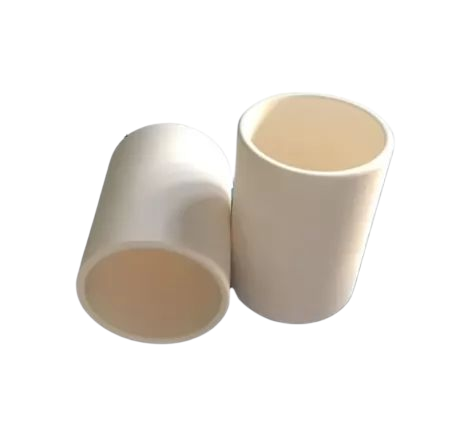
- High thermal conductivity
- Excellent thermal shock resistance
- Low thermal expansion
- Exceptional heat resistance
- Good Chemical Inertness
- High electrical resistance
- Low dielectric constant and loss tangent
- High volume resistivity
- Excellent machinability
Tantalum (Ta) Crucible
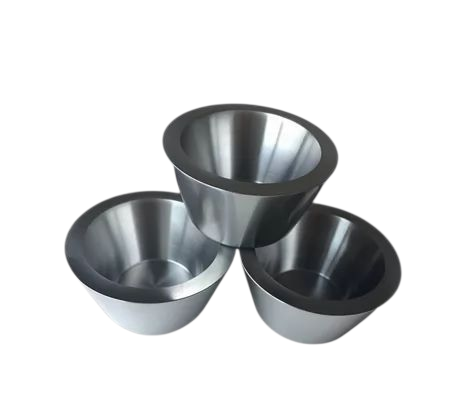
- High melting point up to 2996°C
- Highly resistant to corrosion
- Moderate hardness and ductility
- Excellent chemical properties
- Does not react to hydrochloric acid, concentrated nitric acid and aqua regia under hot and cold conditions
- It can be used to manufacture evaporation vessels and can also be used as electrodes, rectifiers and electrolytic capacitors for electronic tubes
Molybdenum (Mo) Crucible
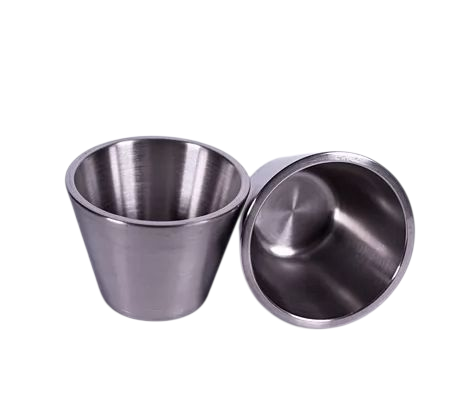
- High density over 10g/cm3
- It has great strength under high temperature, anti-friction corrosion resistance
- High thermal conductivity
- High thermal expansion coefficient
- Ra<6.3
- Mainly used as containers and heating element for evaporation coating machine in optical glasses and spectacles field
- Excellent machinability
Tungsten (W) Crucible
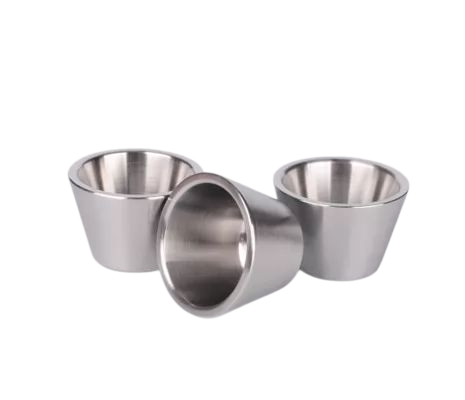
- High density over 18.7g/cm3
- Excellent corrosion resistance
- High melting and boiling points
- High temperature strength
- High abrasion resistance
- Ra<6.3
- The crucible can be used in vacuum inert gas environment under the temperature of 3400℃
- Excellent machinability
Copper (Cu) Crucible
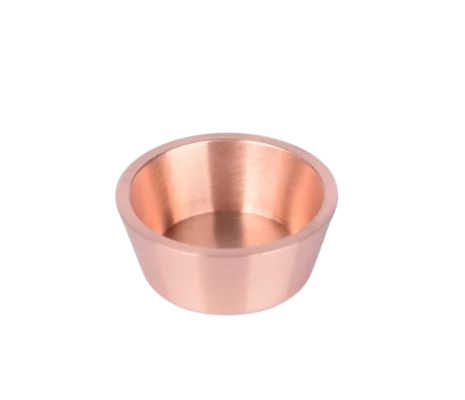
- High density
- Excellent corrosion resistance
- Low resistivity
- High Strength
- Ra<6.3
- Using temperature below 1083.4ºC in vacuum or deoxidize atmosphere
- Excellent machinability
Niobium (Nb) Crucible
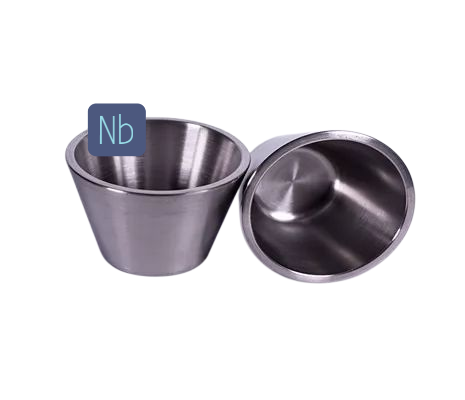
- High density
- Excellent corrosion resistance
- Low resistivity
- High Strength
- Ra<6.3
- Using temperature below 2450ºC in vacuum or deoxidize atmosphere
- Excellent machinability
Boron Nitride (BN) Crucible
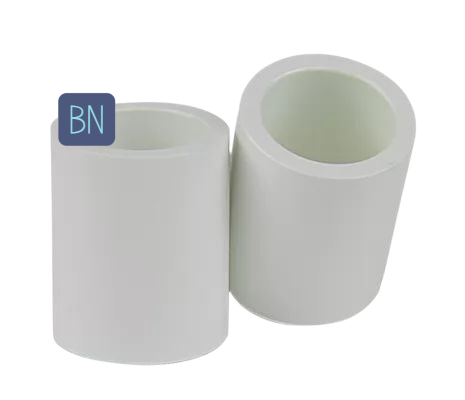
- High thermal conductivity
- Excellent thermal shock resistance
- Low thermal expansion
- Exceptional heat resistance
- Good Chemical Inertness
- High electrical resistance
- Low dielectric constant and loss tangent
- High volume resistivity
- Excellent machinability
All other evaporation crucible available on request.
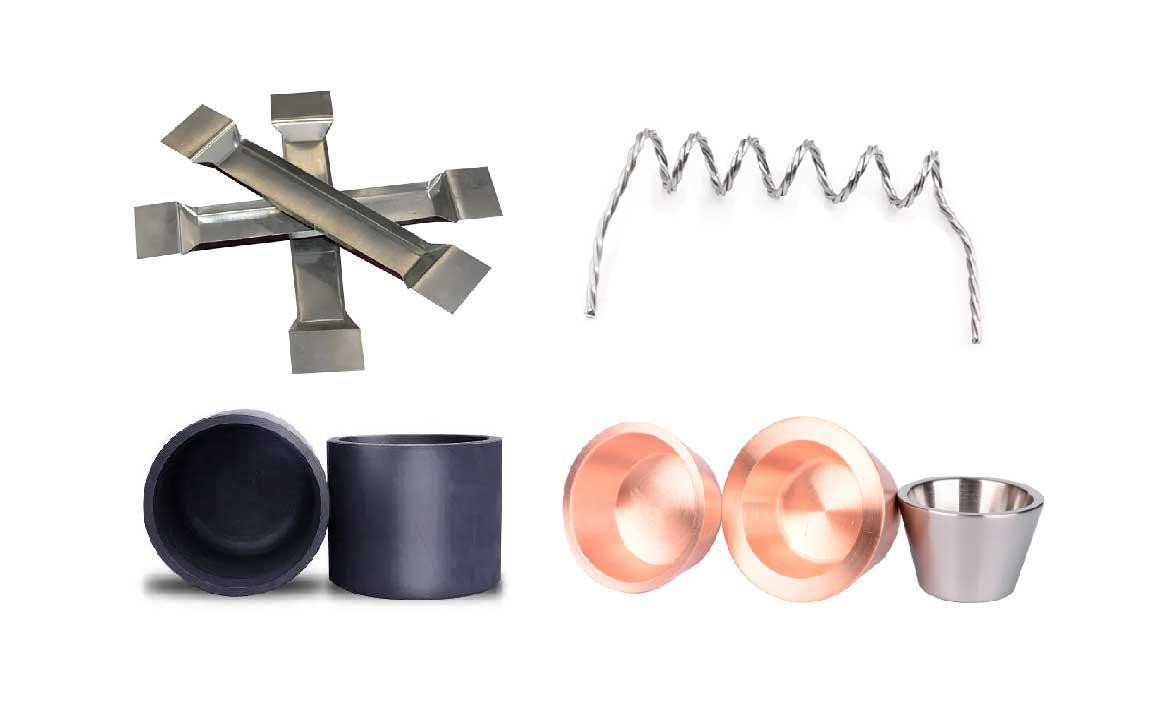
Customization available.
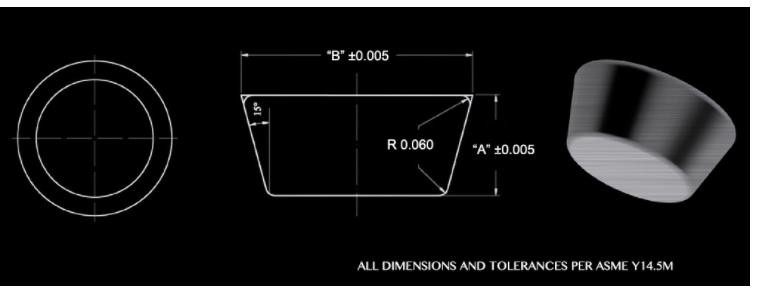
참고로, 다음에 몇 가지 증발증착 재료에 적당한 도가니 정보를 공유합니다.
|
Evaporation Material |
Recommended Crucible(s) |
| Aluminum (Al) | Boron nitride (BN) |
| Aluminum fluoride (AlF3) | Graphite (C ) |
| Al/Si (2%) | Boron nitride (BN) |
| Antimony (Sb) | Boron nitride (BN), Graphite (C ), Aluminum oxide (Al2O3) |
| Antimony telluride (Sb2Te3) | Graphite (C ) |
| Antimony oxide (Sb2O3) | Boron nitride (BN), Aluminum oxide (Al2O3) |
| Bismuth | Aluminum oxide (Al2O3), Vitreous carbon |
| Bismuth telluride (Bi2Te3) | Graphite (C ), Quartz |
| Boron (B) | Graphite (C ), Vitreous carbon |
| Cadmium (Cd) | Aluminum oxide (Al2O3), Quartz |
| Cadmium selenide (CdSe) | Aluminum oxide (Al2O3), Quartz |
| Cadmium sulfide (CdS) | Aluminum oxide (Al2O3), Quartz |
| Calcium fluoride (CaF2) | Quartz |
| Chromium (Cr) | Vitreous carbon |
| Cobalt (Co) | Aluminum oxide (Al2O3) |
| Copper (Cu) | Aluminum oxide (Al2O3), Molybdenum (Mo), Tantalum (Ta) |
| Copper oxide (CuO) | Aluminum oxide (Al2O3) |
| Gadolinium (Gd) | Aluminum oxide (Al2O3) |
| Gallium (Ga) | Aluminum oxide (Al2O3) |
| Gallium arsenic (GaAs) | Graphite (C ) |
| Gallium nitride (GaN) | Aluminum oxide (Al2O3) |
| Gallium phosphide (GaP) | Quartz |
| Germanium (Ge) | Quartz, Aluminum oxide (Al2O3) |
| Germanium oxide (GeO2) | Quartz, Aluminum oxide (Al2O3) |
| Germanium telluride (GeTe) | Quartz, Aluminum oxide (Al2O3) |
| Gold (Au) | Aluminum oxide (Al2O3), Boron nitride (BN), Vitreous carbon |
| Indium (In) | Graphite (C ), Aluminum oxide (Al2O3) |
| Indium oxide (In2O3) | Aluminum oxide (Al2O3) |
| Indium phosphide (InP) | Graphite (C ) |
| Indium sulfide (InS) | Graphite (C ) |
| Iron (Fe) | Aluminum oxide (Al2O3) |
| Iron sulfide (FeS) | Aluminum oxide (Al2O3) |
| Lanthanum (La) | Aluminum oxide (Al2O3) |
| Lead (Pb) | Aluminum oxide (Al2O3), Quartz |
| Lead iodide (PbI2) | Quartz |
| Lead stannnate (PbSnO2) | Aluminum oxide (Al2O3) |
| Lead selenide (PbSe) | Graphite (C ), Aluminum oxide (Al2O3) |
| Lead telluride (PbTe) | Graphite (C ), Aluminum oxide (Al2O3) |
| Lithium (Li) | Aluminum oxide (Al2O3) |
| Lithium fluoride (LiF) | Aluminum oxide (Al2O3) |
| Magnesium (Mg) | Aluminum oxide (Al2O3), Vitreous carbon |
| Magnesium fluoride (MgF2) | Aluminum oxide (Al2O3) |
| Magnesium oxide (MgO | Graphite (C ), Aluminum oxide (Al2O3) |
| Manganese (Mn) | Aluminum oxide (Al2O3) |
| Molybdenum oxide (MoO3) | Aluminum oxide (Al2O3), Boron nitride (BN) |
| Ni/Cr | Aluminum oxide (Al2O3), Vitreous carbon |
| Nickel (Ni) | Aluminum oxide (Al2O3), Vitreous carbon |
| Nickel oxide (NiO) | Aluminum oxide (Al2O3) |
| Palladium (Pd) | Aluminum oxide (Al2O3) |
| Permalloy (Ni/Fe) | Aluminum oxide (Al2O3), Vitreous carbon |
| Phosphorous (P) | Aluminum oxide (Al2O3) |
| Platinum (Pt) | Graphite (C ) |
| Rhodium (Rh) | Vitreous carbon |
| Scandium (Sc) | Aluminum oxide (Al2O3) |
| Selenium (Se) | Aluminum oxide (Al2O3), Vitreous carbon |
| Silicon (Si) | Tantalum (Ta), Vitreous carbon |
| Silicon dioxide (SiO2) | Aluminum oxide (Al2O3) |
| Silicon monoxide (SiO) | Tantalum (Ta) |
| Silver (Ag) | Aluminum oxide (Al2O3), Molybdenum (Mo) |
| Strontium oxide (SrO) | Aluminum oxide (Al2O3) |
| Tantalum pentoxide (Ta2O5) | Vitreous carbon |
| Tellurium (Te) | Aluminum oxide (Al2O3), Quartz |
| Terbium (Tb) | Aluminum oxide (Al2O3) |
| Tin (Sn) | Aluminum oxide (Al2O3) |
| Tin oxide (SnO2) | Aluminum oxide (Al2O3), Quartz |
| Titanium (Ti) | Titanium carbide (TiC) |
| Vanadium pentoxide (V2O5) | Quartz |
| Yttrium (Y) | Aluminum oxide (Al2O3) |
| Yttrium oxide (Y2O3) | Graphite (C ) |
| Zinc (Zn) | Aluminum oxide (Al2O3), Quartz |
| Zinc selenide (ZnSe) | Quartz |
The most common evaporation sources we make are the following 3 types.
-
Wire type evaporation sources
It’s made from tungsten wire and can be formed into filaments, baskets, heaters or looped shaped point sources.
-
Boat type evaporation sources
It’s made from tungsten, tantalum, molybdenum or ceramic type materials capable of withstanding high temperatures.
-
Crucible liners type evaporation sources
It’s made from tungsten, tantalum, molybdenum, copper, graphite and refractory ceramic materials.






